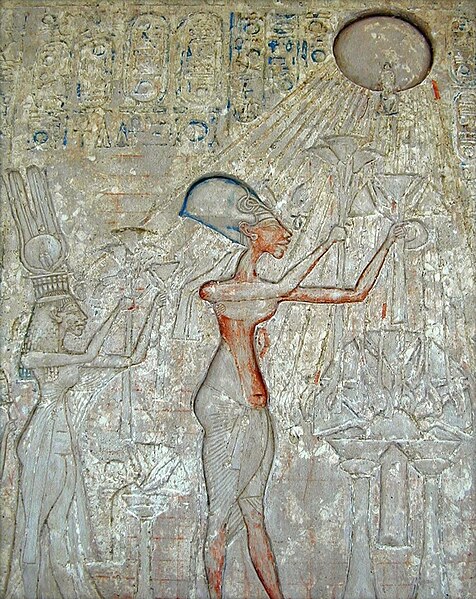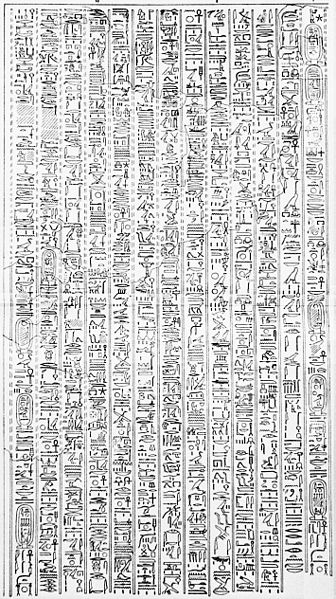The Great Hymn to the Aten is the longest of a number of hymn-poems written to the sun-disk deity Aten. Composed in the middle of the 14th century BC, it is varyingly attributed to the 18th Dynasty Pharaoh Akhenaten or his courtiers, depending on the version, who radically changed traditional forms of Egyptian religion by replacing them with Atenism. The hymn bears a notable resemblance to the biblical Psalm 104.
Pharaoh Akhenaten and his family adoring the Aten.
Drawing of the inscription of the hymn text (1908 publication).
Aten also Aton, Atonu, or Itn was the focus of Atenism, the religious system formally established in ancient Egypt by the late Eighteenth Dynasty pharaoh Akhenaten. Exact dating for the 18th dynasty is contested, though a general date range places the dynasty in the years 1550 to 1292 B.C.E. The worship of Aten and the coinciding rule of Akhenaten are major identifying characteristics of a period within the 18th dynasty referred to as the Amarna Period.
The "Great Hymn to the Aten" written from Akhenaten's point of view; the authorship of the hymn is disputed. Found in the tomb of Ay at Amarna. New Kingdom, Late 18th Dynasty. Amarna, Egypt.
Relief depicting Akhenaten and Nefertiti with three of their daughters under the rays of Aten.
Inscription from the Royal Tomb of Amarna depicting Akhenaten, Nefertiti, and two of their daughters (obscured) worshipping, or 'adoring', the Aten. New Kingdom, late 18th Dynasty. Amarna, Egypt. The Egyptian Museum, Cairo.
Akhenaten sacrificing a duck. New Kingdom, late 18th Dynasty. The Metropolitan Museum of Art, New York City.





